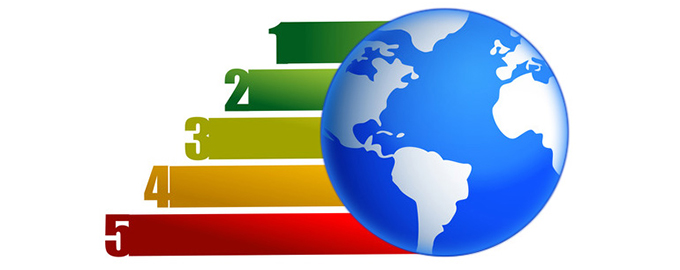
For yet another year, Jiao Tong University (in the Chinese city of Shanghai) has presented the results of the Academic Ranking of World Universities (ARWU), more popularly known as the Shanghai ranking . And, as usually happens every year, its publication arouses interest in the media, although not so much within the academic community.
Any ranking exposes university institutions to other centers and to public opinion, something that is very sensitive considering that they all compete for resources, students and prestige. But the methodology and part of the criteria used for the elaboration of this in particular are not assimilable by all university institutions.
Arbitrariness and scientific bias
To begin with, because it is Jiao Tong University itself that arbitrarily selects the universities that undergo its evaluation . Specifically, it conceives that there are 1,000, of the 25,000 universities in the world, which meet the sufficient requirements. And it does this without any type of debate or cooperation with international academic organizations, which generates certain controversies and relative legitimacy.
Next, because some of the criteria to establish their ranking are hardly applicable in practice to the majority of university institutions. For example, the number of graduates or professors awarded Nobel Prizes or Fields Medals and the number of articles published in the academic journals Science and Nature, which leave the social sciences and humanities out of scientific production.
Private and public
However, the criteria related to the number of researchers cited in a relevant way and the number of articles published in journals located in the Science Citation Index ( SCI ) and Social Science Citation Index ( SSCI ) are more generalizable.
It is no less relevant that universities such as Harvard, Stanford, Cambridge, the Massachusetts Institute of Technology, etc., cannot be compared with most of the universities -among these, the Spanish and Latin American ones-, which have a clear vocation of public service. The first direct their action to incorporate students from, in many cases, privileged social classes and from the environment of the world’s intellectual, economic and political elites. On the other hand, the latter perform a function of social and economic cohesion, either as a social lift for many people from the middle and lower classes, or as a guarantor of a sufficient qualified workforce in the productive sector.
In other words, universities like Harvard or other similar ones, whose budget is just over 39 billion dollars a year , cannot be treated fairly , compared to the rest. The budget of the 50 Spanish public universities together is around 10 billion euros .
The cost of publishing
The ability of the Spanish university system and other Spanish-speaking countries to position themselves in better positions in the aforementioned ranking is unlikely for several reasons.
In the first place, the bulk of the criteria used by the Shanghai ranking have to do with the number of publications in Nature and Science , and other similar ones with an impact on SCI and SSCI. But all of them entail a publication cost of up to 3,500 dollars per article, and not all Spanish universities have funds set aside to assume that cost.
A significant part of university staff in Spain have a non-stable or precarious employment relationship, which limits a greater contribution to scientific production. The situation is very different for full-time faculty at universities like Harvard, Yale, Princeton, etc. There, teachers can earn up to 200,000 dollars a year and enjoy important aid for scientific publications.
Lastly, the number of graduates or distinguished professors such as Nobel Prize or Fields Medal in the universities of Spain and other Latin American countries is very small.
A realistic assessment
Despite all these inconveniences, it must be said that the position of the Spanish university system in this ranking is reasonably positive. To begin with, it ranks third in the number of universities included (55) in the ranking, behind only the US (with 144 universities included) and the UK (with 70 universities).
Forty Spanish universities included in the ranking are public, which demonstrates the enormous capacity and effort of the Spanish public university system to generate knowledge and offer educational quality. In addition, one Spanish university would be among the top 200 and ten among the best 300 and 500 and the rest in different positions of those 1,000 institutions evaluated.
For this reason, a calm reading of the Shanghai ranking makes it possible to accurately assess the contribution of the Spanish university system to science in the world, despite the fact that the criteria used for its elaboration act against it. The position of universities that are in such dissimilar starting material conditions cannot be measured with the same criteria.
How to improve
Despite everything, it is possible to improve the presence of Spanish-speaking universities in this ranking if we are able to achieve the following objectives:
• Guarantee greater stabilization of its teaching and research staff, something in which the Spanish university system is making great efforts.
• Increase investment in science. Spain currently allocates 1.41% of its GDP to research, while the US, which is the top country in the ranking , allocates 3.45% of its GDP.
• Learning to innovate with knowledge, trying to ensure that it has a greater cross-border impact, something that in Spain is still a pending issue in many of its areas of knowledge.
Author Bio: David Moscoso Sanchez is Accredited Professor of Sociolog at the University of Córdoba
